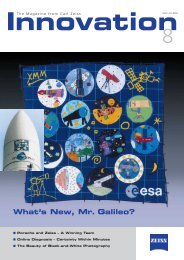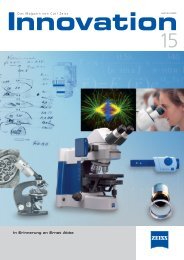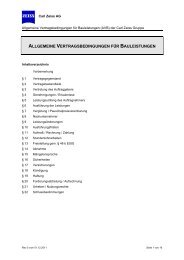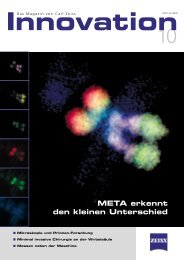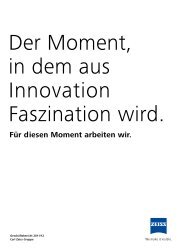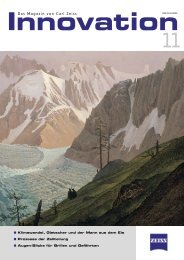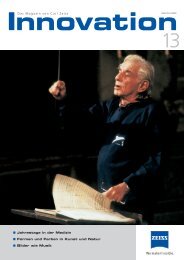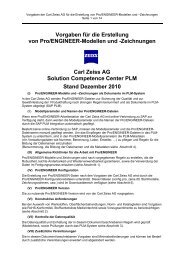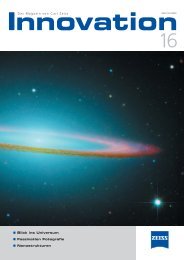Download PDF - Carl Zeiss
Download PDF - Carl Zeiss
Download PDF - Carl Zeiss
You also want an ePaper? Increase the reach of your titles
YUMPU automatically turns print PDFs into web optimized ePapers that Google loves.
nomers<br />
Christiaan Huygens (1629-1695)<br />
was the first to discover Saturn’s moon<br />
Titan in 1655, with a telescope he had<br />
built himself. With his telescope’s improved<br />
resolution, he discovered Saturn’s<br />
rings, which Galileo had described as<br />
Saturn’s “ears”, and the rotation of Mars.<br />
He resolved the trapezium in the center<br />
of the Orion Nebula into four individual<br />
stars and described other nebula and<br />
double star systems.<br />
First thoughts<br />
It was thanks to suggestions from<br />
Oskar von Miller, founder of the<br />
Deutsches Museum in Munich, and<br />
Max Wolf, Director of the Heidelberg<br />
Observatory, that Walther Bauersfeld<br />
designed a concept to project the<br />
starry sky, the sun, the moon and the<br />
planets. Bauersfeld’s team worked<br />
hard on the design and construction<br />
of the instrument. The great moment<br />
came in August 1923 in Jena:<br />
The first starlight from an artificial<br />
sky shone forth. In December 1923,<br />
the Projection Planetarium Model I,<br />
not quite finished, was provisionally<br />
installed in the waiting plaster dome<br />
of the Deutsches Museum. It was<br />
then transported back to Jena, and<br />
following a completion phase was re-<br />
Innovation 16, <strong>Carl</strong> <strong>Zeiss</strong> AG, 2005<br />
Sir Isaac Newton (1643-1727)<br />
was the author of the Philosophiae<br />
Naturalis Principia Mathematica published<br />
on 5 July, 1687. In it he describes<br />
universal gravitation and the laws of<br />
motion: the foundation stone of classical<br />
mechanics. This enabled him not only<br />
to describe the movements of the planets<br />
as Johannes Kepler had done, but also<br />
to explain them for the first time.<br />
turned to Munich in the spring of<br />
1925, where its official opening<br />
formed part of the festivities to mark<br />
the opening of the Deutsches Museum<br />
on 7 May 1925.<br />
Even while the first two Model I<br />
instruments were being built, plans<br />
got under way for Model Series II.<br />
This projector already had the<br />
“dumbbell” form that was long typical<br />
of planetariums and enabled<br />
simulation of the starry sky as it<br />
appeared from any place in the<br />
world. The first Model II type planetarium<br />
was installed in Wuppertal.<br />
After that, the planetarium went<br />
from strength to strength in locations<br />
all over the world.<br />
Edmond Halley (1656-1742)<br />
applied Newton’s law of gravitation to<br />
the calculation of the orbital paths of<br />
comets. He realized that the sightings in<br />
1531, 1607 and 1682 had to be of one<br />
and the same comet, and predicted its<br />
reappearance in the year 1758.<br />
3<br />
33




